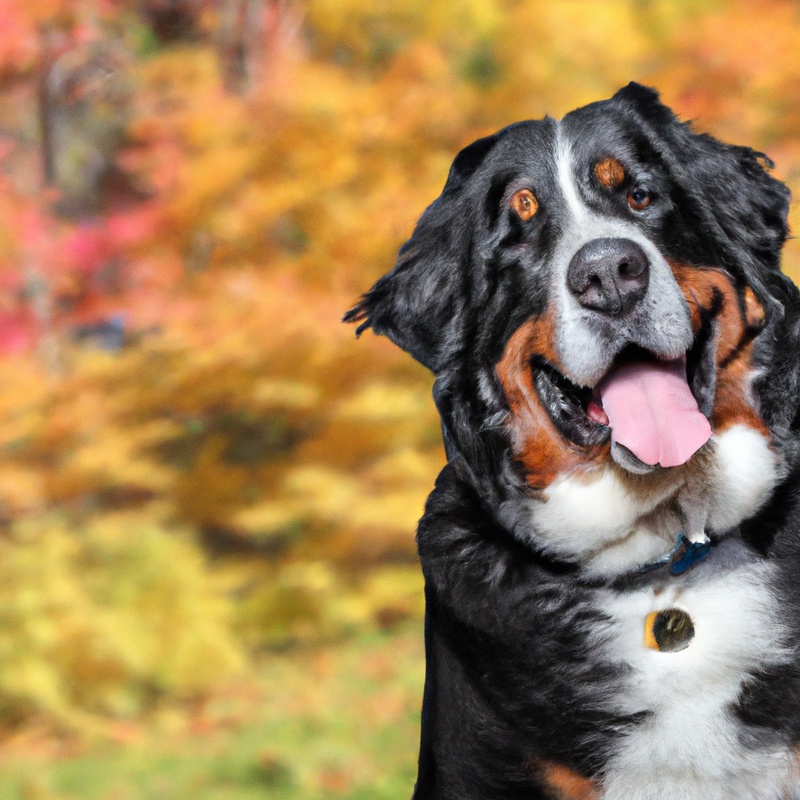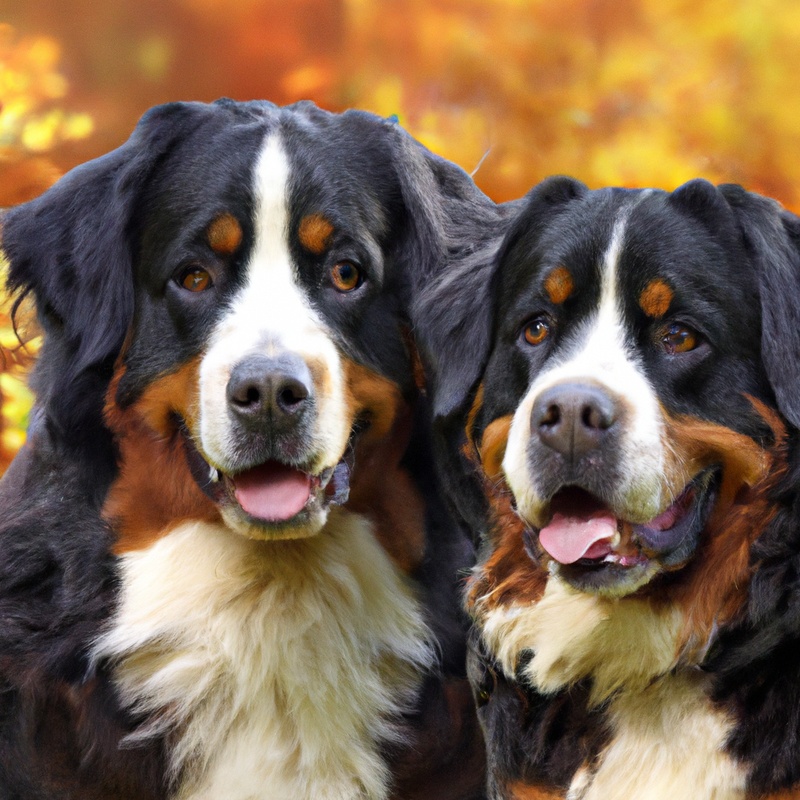Can Bernese Mountain Dogs Be Left With Children Unsupervised?
Key Takeaways:
- Bernese Mountain Dogs are generally good with children and can be left unsupervised, but caution is always recommended.
- Socialization, obedience training, and supervision are crucial for ensuring a positive interaction between Bernese Mountain Dogs and children.
- Each dog’s individual temperament and the child’s behavior should be considered when assessing the safety of leaving them unsupervised.
- It is important to establish clear boundaries and teach children how to properly interact with dogs to prevent any potential incidents.
Hey there dog lovers! Are you considering getting a Bernese Mountain Dog but worried about leaving them alone with your children?
Well, you’ve come to the right place! As a lifelong dog enthusiast and experienced owner, I’m here to shed some light on the topic.
In this article, we’ll explore the nature and temperament of Bernese Mountain Dogs, the factors to consider when leaving them unsupervised with kids, the precautions and safety measures to take, and how to identify potential issues or compatibility.
So, let’s dive in and find out if these gentle giants can be trusted to keep your little ones company without constant supervision.
| Question | Answer |
|---|---|
| Can Bernese Mountain Dogs be left with children unsupervised? | No |
The Nature of Bernese Mountain Dogs
Temperament and Characteristics
The temperament and characteristics of Bernese Mountain Dogs make them well-suited for families with children. These dogs are known for being gentle, patient, and protective.
They are generally friendly and tolerant, making them great companions for kids.
Bernese Mountain Dogs also have a calm and gentle nature, which helps them handle the energetic playfulness of children. However, it’s always important to supervise interactions between any dog and children to ensure safety for both parties involved.

Interaction with Children
Interaction with children is an important aspect of a Bernese Mountain Dog’s temperament.
They are generally gentle, patient, and loving with kids.
Their calm and friendly nature makes them great companions for children.
However, it is essential to supervise their interactions to ensure safety for both the dog and the child.
Bernese Mountain Dogs are large and may accidentally knock over a small child.
Teaching children how to approach and handle the dog gently and respectfully is crucial to maintain a positive and safe interaction.
Factors to Consider
Age and Maturity of the Child
The age and maturity of the child are important factors to consider when determining whether a Bernese Mountain Dog can be left with children unsupervised. Young children may not have the understanding or ability to handle a large and energetic dog responsibly.
It is advisable to wait until the child is older and has demonstrated the necessary maturity and understanding of how to interact with a dog.
Proper supervision and guidance from responsible adults should always be prioritized to ensure the safety of both the child and the dog.
Training and Socialization of the Dog
Training and socialization are essential for Bernese Mountain Dogs. Ensure consistent and positive training methods to establish good behavior and obedience.
Start socializing your dog from a young age, introducing them to different people, animals, and environments.
This helps them become well-rounded and comfortable in various situations. Consistent training and socialization will make your Bernese Mountain Dog more adaptable and well-behaved, reducing the risk of any issues when left with children unsupervised.

Supervision and Responsibility
Supervision and Responsibility are key when considering leaving Bernese Mountain Dogs with children unsupervised. You must always prioritize the safety of both the dog and the children.
Remember, dogs can be unpredictable and children may not always understand how to properly interact with animals.
Ensure that the dog is well-trained and socialized, and that the children are educated on how to behave around dogs. Never leave them alone together without proper supervision to avoid any potential accidents or harm.
Precautions and Safety Measures
Teaching Children How to Interact with Dogs
Teaching children how to interact with dogs is important for their safety and the well-being of the dog. Here are some key points to keep in mind:
- Always approach a dog calmly and ask the owner for permission before petting or playing with the dog.
- Teach children to approach the dog from the front and to let the dog sniff their hand before attempting to touch them.
- Encourage gentle touch and petting, avoiding rough play or pulling on the dog’s ears or tail.
- Teach children to respect the dog’s personal space and not to bother them while they eat, sleep, or chew on toys.
- Show children how to recognize signs of stress or fear in a dog, such as growling, barking, or attempts to hide.
- It’s essential to supervise interactions between children and dogs at all times to ensure everyone’s safety.
- Educate children on the importance of not approaching unfamiliar dogs without an adult present.
- Encourage open communication with children about their experiences and feelings when interacting with dogs.
Setting Boundaries and Supervision Techniques
Setting boundaries and using effective supervision techniques are key to ensure the safety of both Bernese Mountain Dogs and children.
- Teach children appropriate behavior around dogs, such as not pulling their ears or tail.
- Establish a designated “dog-free” zone in the house where the dog can retreat if they need space.
- Always supervise interactions between children and dogs, especially younger children.
- Encourage gentle play and positive reinforcement when the child and dog are interacting.
- Teach children to recognize signs of discomfort or stress in the dog and how to respond appropriately.
- Consider using physical barriers or baby gates to separate the dog and child when necessary.
Remember, a safe and respectful environment is essential for both the child’s and dog’s well-being.
Dog-proofing the Environment
Dog-proofing the environment is essential to ensure the safety of your Bernese Mountain Dog and your children.
Here are a few tips to help you create a safe space for everyone:
- Secure hazardous items: Keep chemicals, medications, and small objects out of reach. Trash cans should have secure lids.
- Protect electrical cords: Use cord covers or hide them to prevent chewing and potential electrocution.
- Secure furniture and appliances: Anchor large items to the wall to prevent accidents or tipping.
- Block off restricted areas: Use baby gates or barriers to keep your dog and children separate when necessary.
- Store food safely: Keep all food items securely stored to prevent your dog from accessing them.
- Keep small toys and objects off the floor: Small items can pose a choking hazard for both the dog and children.
- Remove toxic plants: Certain plants can be toxic to dogs, so ensure your home and yard are free from them.
- Establish a safe play area: Designate a specific area for playtime with toys and activities that are suitable for both the dog and children.
By dog-proofing your environment, you can create a safe and secure space for your Bernese Mountain Dog and children to coexist happily without constant supervision.

Signs of Potential Issues or Compatibility
Recognizing Signs of Fear or Aggression in Dogs
Recognizing signs of fear or aggression in dogs is important for ensuring the safety of both children and pets. Some common signs of fear in dogs include trembling, cowering, and avoiding eye contact.
Aggression, on the other hand, may be indicated by growling, snarling, or snapping.
It’s essential to pay attention to a dog’s body language and behavior, as this can provide valuable insights into their state of mind. If you notice these signs, it’s best to seek professional guidance or consult a dog trainer to address any potential issues.
Identifying Stress or Discomfort in Children
When it comes to identifying stress or discomfort in children, there are few key signs to look out for.
Firstly, pay attention to any drastic changes in behavior such as increased irritability or withdrawal.
Secondly, watch for physical symptoms like stomachaches or headaches that may indicate underlying stress.
Thirdly, listen to what the child is saying or not saying.
They may express their discomfort through words or silence.
Remember to create a safe and open environment for children to share their feelings.
Seeking Professional Advice
If you have concerns about leaving your Bernese Mountain Dog alone with children, it’s always a good idea to seek professional advice. A professional dog trainer or veterinarian can provide valuable insight and guidance based on their expertise and knowledge.
They can assess the specific temperament and behavior of your dog, as well as the individual needs and behavior of your children.
Seeking professional advice can help you make an informed decision regarding the safety and well-being of everyone involved.
Frequently Asked Questions (FAQs)
Can Bernese Mountain Dogs get along with children?
Bernese Mountain Dogs are known to be great companions for children. They have a gentle and patient nature, making them suitable for families with kids.
These dogs are often highly tolerant and can handle the energy and playfulness of children.
With proper socialization and training, Bernese Mountain Dogs can form strong bonds with children, making them a wonderful addition to family life. However, it’s always important to supervise interactions between dogs and children to ensure safety for both.
What age is safe to leave Bernese Mountain Dogs with children?
It is generally recommended to wait until your Bernese Mountain Dog is at least three to four years old before leaving them unsupervised with children.
This is because Bernese Mountain Dogs are large and powerful dogs that may unintentionally knock over or accidentally injure small children.
Waiting until they are a bit older ensures that they are more calm, obedient, and have better control over their strength.
Always prioritize the safety of both your dog and your children by closely monitoring their interactions until you are confident in their ability to interact safely.
How should children and Bernese Mountain Dogs be supervised together?
When supervising children and Bernese Mountain Dogs together, it is important to prioritize safety and ensure a positive experience for both.
Here are some guidelines to follow:
- Teach children proper behavior: Educate children on how to interact respectfully with dogs, such as not pulling on their fur or tails.
- Supervise interactions: Always be present and actively monitor the interactions between children and the dog to prevent any potential incidents.
- Provide a safe space: Create a designated area where the dog can retreat to if they feel overwhelmed or need a break from the children.
- Set boundaries: Establish clear rules for both the children and the dog, such as no rough play or invading the dog’s personal space.
- Teach gentle handling: Show children how to touch and handle the dog gently, avoiding any actions that may cause discomfort or fear.
- Monitor food and toys: Ensure that children understand not to disturb the dog while it is eating or playing with its toys to avoid any aggression.
Final Verdict
While Bernese Mountain Dogs are known for their gentle and friendly nature, it is still crucial to exercise caution when leaving them unsupervised with children. Factors such as the age and maturity of the child, as well as the training and socialization of the dog, play a significant role in determining the suitability of this interaction.
It is important to teach children how to interact with dogs, set boundaries, and dog-proof the environment to ensure the safety and well-being of both the child and the dog.
Recognizing signs of fear, aggression, stress, or discomfort in either party is essential, and seeking professional advice is recommended when needed. Overall, responsible supervision and proper precautions are key when considering the compatibility between Bernese Mountain Dogs and children.







